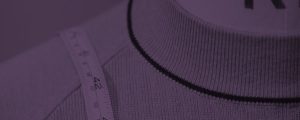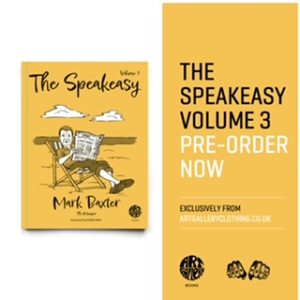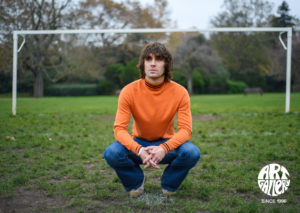
The Fashion and Textile Museum on Bermondsey Street, situated ten minutes’ walk from London Bridge railway station, is always worth a visit whenever you find yourself down that way. Back in 2009, myself and my wife Lou made our way there, to take in the show dedicated to 1960s clothes designers Foale and Tuffin. I had read feature pieces on them over the years, so was aware of their names, but knew very little of their history and just how influential they became. As all good exhibitions should do, by attending this one, I got educated and knew quite a bit more when I came out, than when I went in.
Marion Foale born in Edmonton, North London in 1939, had wanted from an early age to be a painter. However, she faced resistance in that idea from her parents who saw a more conventional route for their daughter, one of getting married young and settling down. Instead, Marion rebelled and enrolled at Walthamstow Art College studying General Arts and Crafts, still determined to be a great artist. The reality of trying to make a living doing that however, slowly dawned on her after a couple of years and instead, her thoughts turned to making clothes. With a mother for a milliner and a father who had shown her how to use a sewing machine, she moved over to the fashion school and her basic background in pattern cutting , fast tracked to now be studying fashion.
Sally Tuffin was born in 1938 and comes from Saffron Walden, Essex. She attended a Quaker boarding school, and unlike Marion, had parents who actively encouraged her to go to art school. Her mum had been a dress maker just after the war and her faither, was also creative, having worked as a printer. She too joined Walthamstow Art School and there, met Marion in 1955.
Sally also studied dressmaking in the fashion department and after four years, earned a National Diploma of Design. She was then accepted into the Royal College of Art and she was joined there by Marion, as they both studied under Professor Janey Ironside.
After hearing a talk at the college, from Alexander Plunkett Green, then husband and business partner of Mary Quant, they felt inspired enough to set up their own company. Both were steeped in the world of couture and had already visited many of the world-renowned houses in Paris, Givenchy, Balenciaga, Chanel and Dior.
With sewing machines gifted to them by their parents, they started the cut and make at the flat they shared in South Kensington. They quickly sold items to ’21 Shop’ which catered for the younger crowd, on the ground floor of Woolland Brothers department store, situated next door to Harvey Nichols. Slowly, the orders from the Woollands increased. Then their designs were picked up by Vogue magazine, by the journalist Marit Allen, for her influential ‘Young Ideas’ section.
Their work was photographed by a new up and comer, who came from roughly the same part of the world as Marion and Sally, one David Bailey. This additional press helped to raise their profile, and when they picked up an order for 36 garments, they knew it was time to bring in help, to cope with the increasing demand. They used factories to turn around the work, always under their guidance, and they’d tailor each garment that came back to them before delivery.
Finding their way around old male dominated work practices at cloth mills, they began to buy fabric wholesale, for cash at first, which would have greased any sticky situations they came across. With interest in their creations increasing – they were also now stocked by Browns on South Molton street – they looked for premises in the West End to open a workroom and showroom. They found an empty unit off Marlborough Court, situated near Carnaby Street, suggested to them by a friend, the milliner James Wedge, for six guineas a week . They had set up there just before the clothing explosion of that area took place, but when it did, they of course found themselves in the exactly right place to make the most of it. Gradually, with increased trade, they realised there was also a demand for a shop selling their designs and in 1964, they opened to the public from number 4 Ganton Street.
Marion – ‘There weren’t many trousers for women that you could buy at the time. And there was this whole problem with miniskirts and what you put on your legs. Stockings in those days were flesh coloured, fine denier and worn with suspender belts. Well, we wanted fun colours, and thicker as well. We found these wonderful Swedish stockings, which we sold in our shop. And I think the trouser suit revolution was just a feeling in the air – that had to happen. (Then) we were taken on by (New York boutique) Paraphernalia, and (American department store) J.C. Penney licensed our designs.
Sally – ‘We went to New York (in 1965) with loads of confidence, to make a collection (they were invited to the States to help promote Paraphernalia’s wholesale arm, Youthquake). We had a very good friend, John Kloss, and went to his flat overlooking Manhattan – we made the clothes in his sitting room. You could just go to a fabric company, order your bolts of fabric, go back to the flat, and the order would arrive before you! Can you imagine that happening in London? It was amazing. For their ‘Swinging Sixties’ promotion, Paraphernalia took double-decker buses over to New York, and there were flags and everything. We did a whistle-stop tour of the States with a band called The Skunks and the Go-Go Girls! It was great fun – but absolutely exhausting.’
With Swinging London in full, er, swing, Foale and Tuffin were now in the epicentre of all things London fashion wise, and the pair were quickly dubbed the Queens of Carnaby. Known for their bold use of Liberty prints, they produced cutting edge design with a feminine aesthetic.
Their label ran successfully until 1972 and after their final collection which they called ‘Coco Thrills,’ they parted company.
Marion moved into knitwear and eventually opened a shop on Hinde Street, Marylebone. Sally is now a ceramicist working out of a pottery – Dennis Chinaworks – which she runs with her husband Richard.
Dennis Nothdruft – head of exhibitions at The Fashion and Textile Museum –
‘Marion Foale and Sally Tuffin epitomised the spirit of the times with their youthful, easy-to-wear clothes. Their use of pop art motifs and the introduction of trouser suits for women are just two of their important contributions to styles fo the early 1960s.
Sir Paul Smith – ‘They were such pioneers. It was so revolutionary what they were doing, these girls were really ahead of the game.’
Marion and Sally – ‘We simply made what we wanted to wear.’
The Mumper of SE5
Read The Mumper’s other weekly musings on the The Speakeasy Blog page
THE SPEAKEASY VOLUME 3 – AVAILABLE TO PRE ORDER NOW
SHIPPING W/C 12.12.22
THE SPEAKEASY Volume Three by Mark Baxter (The Mumper)
Illustrations by Lewis Wharton
Foreword by Eddie Piller
Available to ORDER exclusively in the Art Gallery Clothing SHOP
ART GALLERY CLOTHING
JOIN US
Sign up to our newsletter and receive an exclusive promo code, latest news & Art Gallery Clothing offers.




